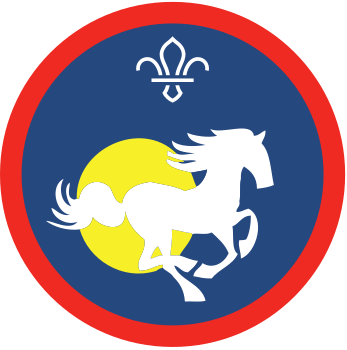Trekking around
You’ll need
- Scissors
- Tables
- Chairs
- Pens or pencils
- Scrap paper
- Glue sticks or sticky tape
- A map of the local area
Before you begin
- At a previous meeting, split everyone into small groups and give them a topic:
- health issues affecting horses, including worms and laminitis
- grass management, the results of overgrazing, and how to recognise poisonous plants
- road safety while riding
- safety equipment for riders, including a hat and body protector
- Everyone should research their topic and bring back the information they find out. If research isn’t possible at home for some of the group, bring in printouts or books and magazines and do the research during a meeting.
- Set up a tables and chairs for each small group. Put scissors, glue or tape, pens and paper on each table.
Trek it out
- Everyone should sit in their small groups. Each small group should put their research together and pull out at least ten facts about their topic, which they will then share with everyone else.
- Each small group should look at the map of the local area in turn. They should find a location that relates to their topic, such as a field for grass management, or a junction for road safety.
- Work together to plan a walking route to get there, considering time limits and accessibility.
- Everyone should gather their information and prepare to present it in their chosen location.
- Set off walking to the first location, sticking together and being mindful of road safety.
- Everyone should notice things they see while walking that may be helpful if they were trekking on horseback, such as the different signposts for public footpaths and bridleways.
- When a group reaches their chosen location, they should present their information and answer any questions. Visit all the locations and hear all the presentations. Then walk back to the meeting place.
Reflection
This activity helped everyone to develop skills and knowledge about horse health. It’s easier for people to stay safe when they know how to look after a horse (and themselves). What did people learn about poisonous plants and horse health issues? How would being able to recognise these help people to stay safe? People could think about how plants can grow anywhere, so riders should look for them at stables and on treks. Knowing the signs of a health issue can help people understand if a horse needs to see a vet.
This activity also involved working as a team to collate and present information. How well did people communicate during this activity? How would people have to adapt their communication if they were out on a trek with their friends? They’d be further apart if they were riding horses – could they come up with hand signals or talk a bit louder?
Safety
All activities must be safely managed. You must complete a thorough risk assessment and take appropriate steps to reduce risk. Use the safety checklist to help you plan and risk assess your activity. Always get approval for the activity, and have suitable supervision and an InTouch process.
- Hiking and walking
Follow the guidance for activities in Terrain Zero, or the guidance for each the adventurous activity.
- Snow and ice
Be careful when activities involve snow and ice. Check surfaces and reduce the risk of slipping where possible. Have appropriate supervision for this activity.
- Outdoor activities
You must have permission to use the location. Always check the weather forecast, and inform parents and carers of any change in venue.
- Dark
Provide some light, so the environment isn’t completely dark. Everyone must be able to see others and move around the area safely.
- Road safety
Manage groups carefully when near or on roads. Consider adult supervision and additional equipment (such as lights and high visibility clothing) in your risk assessment.
If anyone feels confident about their knowledge, give them the opportunity to present the information in a different way, such as a practical demonstration or a video.
If anyone doesn’t feel comfortable presenting, give them other opportunities such as writing all the information down or helping to navigate to the next location.
All Scout activities should be inclusive and accessible.
This activity could work well alongside another requirement for a different badge. Try the Navigator Staged Activity Badge, the Scouts Geocaching Activity Badge, and the Scouts Local Knowledge Activity Badge.
This activity gives everyone the change to complete their own research and present their findings. Young people can also use their navigation skills to get to each location on the walk.
